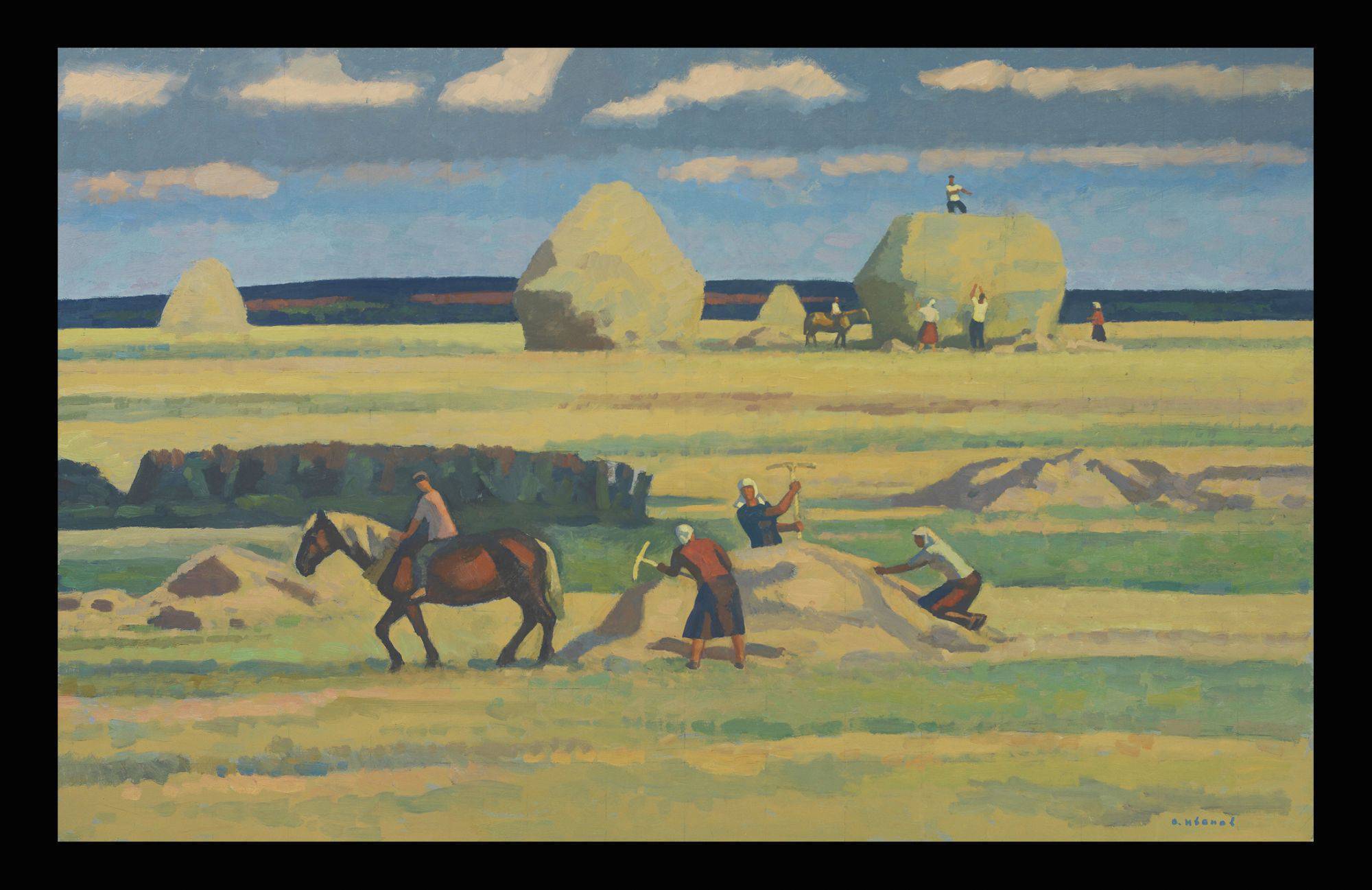Harvesting near Ryazan

Ivanov, Victor Ivanovich
1924 -
Harvesting near Ryazan
Oil on board
85 x 135cm
Signed
PROVENANCE:
Collection of the artitst's family
LITERATURE:
Certificate of the artist
Victor Ivanov was one of the leading Severe Style artists to emerge in the 1960's. Born in Moscow in 1922 he studied at the Secondary School of Art in Moscow (1939 - 1944) under Vasily Pochitalov and Konstantin Molchanov. He then attended the Vasily Surikov Institute of Art in Moscow (1944 - 1950) under Alexei Gritsai and Yury Kugach. He contributed to all major Soviet Exhibitions after 1950 and was a member of the Union of Artists from 1951. He won all the major Soviet art prizes such as State Prize of the USSR (1968), the Ilya Repin State Prize of the USSR (1989) and the State Prize of Russia (1996). He was awarded silver (1963) and gold (1985) medals by the Academy of Arts of the USSR.
Victor Ivanov on the Oka river circa 1960
Ivanov spent his summers at his dacha near Ryazan from which he could see the Oka river, a subject he often painted. Oka is a Finnish word (along with the Moscow and Volga rivers) from the Finnish people who inhabited the area before the Russians. Ivanov said, "Here, on the banks of the Oka river, I feel good. Every artist strives to find that place where he feels good, where he hears the beating of the heart of his Motherland better than anywhere else (V. I. Ivanov, "Rodilsya chelovek," Tvorchesto, 1970, No. 1, p. 7).
Ivanov spent his summers living with the people in the fields painting them go about their activities such as the harvesting in this painting, Harvesting near Ryazan.
Victor Ivanov talking to fellow Severe Style artist Petr Ossovski c 1960's
Harvesting near Ryazan is a magnificent example of the harvesting scenes for which the artist became famous. It is a pair with Men resting at Harvest. The artist portrays a Russia that he grew up in that still has the men and women raking and scything by hand. The huge hay bales, depicted in the painting and now a thing of the past, were then built using horses and manpower. Ivanov leaves out all unnecessary detail and simplifies the painting into blocks of colour. It looks simple and yet it is remarkably complicated to achieve such harmony and balance in the composition. Ivanov was influenced by the futurists and the Russian painters of the 1930's such as Petrov Vodkin, Pimenov and Deinika.
Victor Ivanov second from right
Ivanov's works can be seen in all the major Russian museums such as the Tretyakov and the Russian museum but the the best collection of his work can be found at the Victor Ivanov museum in Ryazan.





